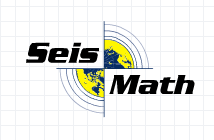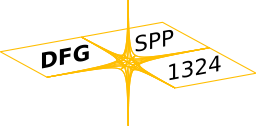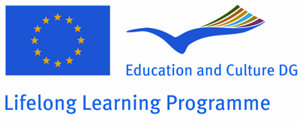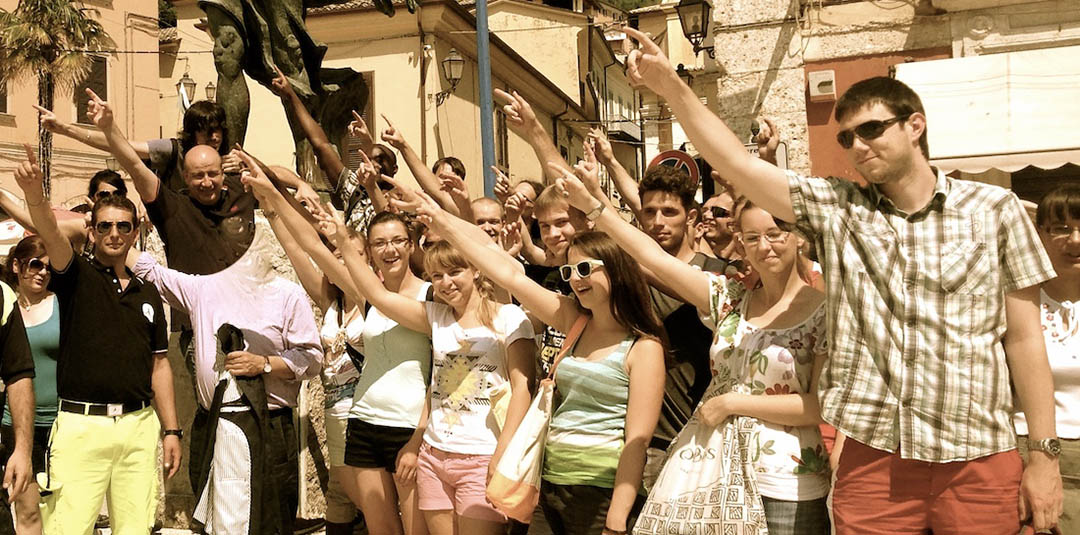Intensive Programme - Mathematical Models in Seismology
8 - 19 July 2013, University of L'Aquila
SeisMath IP 2013
 |
 |
 |
Welcome to the 2013 Intensive Programme (IP) in
Mathematical Models in Seismology
8 - 19 July 2013, University of L'Aquila (Italy)
Coordinators: Armin Iske and Bruno Rubino
Coordinating Institutions: University of Hamburg and University of L'Aquila
Venue: University of L'Aquila (Italy)
Scientific Committee
- Alvaro Corral (Centre de Recerca Matematica, Barcelona, Catalonia, Spain),
- Armin Iske (Department of Mathematics, University of Hamburg, Germany),
- Antonino Morassi (Department of Georesources and Territory, University of Udine, Italy),
- Roberto Paolucci (Structural Engineering Department, Politecnico di Milano, Italy),
- Mircea Radulian (Scientific Director National Institute for Earth Physics, Bucharest, Romania),
- Bruno Rubino (Department of Information Engineering, Computer Science and Mathematics, University of L'Aquila, Italy)
List of Partner Institutions and Local Coordinators of the SeisMath IP 2013
University of L'Aquila (Italy) - Coordinator, Prof. Bruno Rubino
Brno University of Technology (Czech Republic), Prof. Josef Slapal
University of Hamburg (Germany), Prof. Armin Iske
National and Kapodistrian University of Athens (Greece), Prof. Nicholas Alikakos
University of Crete (Greece), Prof. Chrysoula Tsogka
Politecnico di Milano (Italy), Prof. Roberto Paolucci
University of Udine (Italy), Prof. Antonino Morassi
Tehnical University of Cluj Napoca (Romania), Prof. Petrica Pop
Autonomous University of Barcelona (Catalunia, Spain), Prof. Aureli Alabert
Middle East Technical University (Turkey), Prof. Sinan Akkar
University of Maine (France), Prof. Sohbi Sahraoui
Second University of Naples (Italy), Prof. Eugenio Lippiello
University of Naples (Italy), Prof. Aldo Zollo
Presentation
Earthquakes occur nearly constantly around Europe in places like Greece, Italy, Portugal, Romania and Turkey. But earthquakes can occur almost anywhere. Italy is a well-known complex earthquake zone. In Italy there is the collision of Africa and Europe, it is highly fractured and broken up, there are a lot of micro plates moving around, which create a lot of different types of fault action.
An earthquake measuring 5.8 on the Richter scale and 6.3 in the moment magnitude scale hit L'Aquila on April 6th, 2009. There have been a large number of minor tremors since December 2008. Along with the stories of tragedy in L'Aquila, there are also stories that the earthquake was predicted, and that the predictions were ignored. Earthquake prediction remains an elusive goal of seismology. Earthquake source mechanisms are complex and involve many variables and factors. Earthquake prediction can be divided into long-, medium- and short-term phases. The short-term prediction of earthquakes has considerable allure. However, it is beset by problems. Although earthquakes are complex multi-scale phenomena, we now have much better models for earthquake nucleation and rupture processes, associated phenomena such as tsunamis, and tools with which earthquakes can be carefully studied from both deterministic and statistical points of view.
The Intensive Programme (IP) called "Mathematical Models in Seismology - SeisMath 2013" will consist of a set of short courses and seminars. Contributors will take into account methods, modelling and simulations related to above mentioned aspects of seismology. Although the need for newly developed mathematical modelling within seismology is very strong, its clear identification as an interdisciplinary research/training context at a European level is still in progress. This programme aims to provide a relevant contribution to this process by exploiting the scientific competencies of the partners. The short courses will be taught by physicians, geologists, engineers and mathematicians.The programme is addressed mainly to MSc and PhD students in Applied Mathematics, but also in Civil and Environmental Engineering and Applied Physics.
The participation of students and teachers will be supported by the LLP Erasmus Programme (see the partner universities) and by the DFG Priority Program 1324.
Reimbursement
Reimbursement for DFG Priority Program 1324 participants
Students and teacher supported by the DFG Priority Program 1324 will have to follow the standard procedures adopted by that program. For further information you may contact Prof Armin Iske.
Reimbursement for LLP participants
Applicants from LLP partner institutions (but not from the University of L'Aquila) are eligible for a reimbursement of living and travel expenses.
This contribution is offered by the LLP Italian National Agency. 
We assume to select:
- around 30 students (MSc or PhD) for the contribution for travel costs and the contribution for accommodation and subsistence costs: this corresponds to about 3 students for each partner institution.
- around 10 teachers for the contribution for travel costs and the contribution for accommodation and subsistence costs.
The contact person of each institution in the Organizing Committee is responsible for the selection of students in their universities.
Details about Reimbursement
Reservation for lodging and contribution for subsistence costs.
Please notice that students and teachers from LLP partner universities will be hosted in university premises free of charge for the whole period of the IP. Unfortunately, the Erasmus agency applies a very low daily amount for subsistence costs of students (24 euro per day, both for lodging and full board). That's why, in addition to the accommodation, we can confirm that we will only be able to offer students free access to the university canteen (open on working days). We hope we'll be able to offer some additional support to students, but we cannot guarantee anything at the moment.
Reimbursement for travel costs.
- We are allowed to reimburse travel costs only to teachers and students (MSc and PhD) who are from LLP partner institutions.
- The Erasmus Agency requires each single participant to certify they bought the cheapest flight ticket they could find. In addition, only tickets from/to the town of your home institution can be reimbursed.
- Please upload a copy of your electronic ticket as soon as possible. If you have an online check-in, please upload a pdf copy of it, as well. Otherwise, please keep the boarding pass with you and give it to us when you arrive. Without that, we will not be able to reimburse your travel expenses!
- As for the participants who need a visa, please contact the organizers at info[AT]seismath.eu to ask for a specific invitation letter. The cost of the visa will be reimbursed if the participant provides the original receipt of payment.
- For any additional tickets (or not electronic ones), when you are here, you'll have to provide us with the original one. In addition, you will be requested to provide us with the original boarding pass (if you have not uploaded the electronic one).
Lectures
Corral
TITLE
Criticality and Self-organization in Models of Earthquake Occurrence
HOURS
6
LECTURER
Álvaro Corral (Autonomus University of Barcelona, Bellaterra, Spain)
ABSTRACT
The statistics of earthquake occurrence contains very counter-intuitive results. We start by showing that the energy radiated by earthquakes follows a power-law or Pareto distribution. This means, in theory, that the expected value of the energy does not exist (is infinite), and in practice, that the mean of a finite set of data in not representative of the full population. Also, the distribution presents scale invariance, which implies that it is not possible to define a characteristic scale for the energy.
A simple model to account for this peculiar statistics is a branching process: the activation or slip of a fault segment can trigger other segments to slip, with a certain probability, and so on. Although not recognized initially by seismologists, this is a particular case of the stochastic process studied by Galton and Watson one hundred years in advance, in order to model the extinction of (prominent) families. Using the formalism of probability generating functions we will be able to derive, in an accessible way, the main properties of these models. A phase transition arises between a regime with only small earthquakes and another regime where "infite" never-ending earthquakes can develop. Remarkably, a power-law distribution of energies is only recovered in a very special case, when the branching process is at the onset of attenuation and intensification, i.e., at criticality. In order to account for this fact, we introduce the self-organized critical models, in which, by means of some feedback mechanism, the critical state becomes an attractor in the evolution of such systems.
Practical notions about how to deal with the statistics of these systems are also given. The bulk of the material presented here is self-contained, as only elementary probability and mathematics are needed to attend the lectures.
Bibliography
A. Corral and F. Font-Clos, arXiv:1207.2589, 2012.
A. Corral and A. Deluca, arXiv:1212.5828, 2012.
Lippiello
TITLE
Seismic forecasting from correlations in earthquake catalogs
HOURS
8
LECTURER
Eugenio Lippiello (Second University of Naples, Caserta, Italy)
ABSTRACT
I will present a general framework where seismic occurrence is described as a stochastic process. Within this scheme the evolution of seismic occurrence probability is given by the superposition of a deterministic part plus a random fluctuating contribution. I will discuss the implications for seismic hazard evaluation and show some examples of forecasting maps.
Di Francesco
TITLE
On a transport model for the evacuation of pedestrians: nonlocality and mean field games
HOURS
4
LECTURER
Marco Di Francesco (University of Bath, UK)
ABSTRACT
We first introduce the celebrated transport model by R. L. Hughes for the movement of pedestrians, and give an overview of its mathematical theory. We show the behaviour of the model with some special solutions of Riemann type, and give an interpretation of the qualitative behaviour of solutions in one space dimension. We then present a more general approach based on the theory of mean field games developed by Lasry and Lions, with the variant of nonlinear mobilities in the pay-off functional, as a result of overcrowding effects. For this model we prove existence of minimizers and provide a formal derivation of the optimality conditions in the context of PDEs in optimal control.
Chiorean
TITLE
Computer based nonlinear inelastic analysis methods for seismic performance evaluation of 3D composite steel-concrete frameworks
HOURS
4
LECTURER
Cosmin Chiorean (TU Cluj-Napoca, Romania)
ABSTRACT
With the rapid advancement of computer technology, research works are currently in full swing to develop advanced nonlinear inelastic analysis methods and integrate them into the new and more rational advanced analysis and design procedures. This issue is becoming continually challenged throughout the world and puts increased pressure on structural engineers to have appropriate software and design tools to assess the behaviour of real-large scale frame structures. Reliable nonlinear analysis tools are, for instance, essential in performance-based earthquake engineering, and advanced analysis methodologies, that involves accurate predictions of inelastic limit states up or beyond to structural collapse. Since Kobe and Northridge earthquakes, a static inelastic analysis (pushover analysis) becomes an accepted and simple method for the seismic evaluation of high-rise buildings. The purpose of the pushover analysis is to evaluate the expected performance of a structural system by estimating its strength and deformation demands in design earthquakes by means of a static inelastic analysis, and comparing these demands to available capacities at the performance levels of interest. In this direction, the new design documents, have developed modelling procedures, acceptance criteria and analysis procedures for pushover analysis.
The aims of this short course is to present several mathematical and numerical models for advanced structural analysis and seismic performance evaluation of 3D composite steel- concrete building frameworks with rigid or flexible connections. The course will cover several key elements of the nonlinear inelastic analysis methods including: advanced inelastic analysis of composite cross-sections with arbitrary shape, distributed plasticity, second order geometrical effects, flexibility based approach to develop the stiffness matrix of 3D beam-column elements with semi-rigid joints, advanced incremental-iterative procedures for nonlinear analysis of structures and advanced pushover analysis procedures. Several computer programs specifically developed on this issues will be presented and some computational examples will be given in order to validate the effectiveness and the reliability of the codes.
[/tab]
Verdes
TITLE
Innovative strategies in Seismic Design and Building Practice
HOURS
3
LECTURER
Doina Verdes (TU Cluj-Napoca, Romania)
ABSTRACT
The subject matter of earthquake engineering has rapidly evolved over the last few decades to become a science-based engineering discipline with a well defined body of knowledge. Earthquake engineering encompasses multidisciplinary efforts from various branches of science and engineering with the goal of reducing the seismic risks to socio-economical acceptable levels. Earthquakes are inevitable but earthquake disaster can be controlled. The fault ruptures from which significant earthquakes start off do not directly kill the people; even rupture by itself does not result in great economic loses. The cause of most of the injuries and economic losses is the interaction of the earthquake motion with the built environment. What is needed is the reduction of seismic risks by controlling the built environment and this should be the ultimate goal of earthquake engineering (see (1)).
The following approaches and methodologies will be presented in the course:
1. The Performance-Based Seismic Design approach in design of seismic resistant buildings.
2. The Performance-Based Seismic Design approach based on the use of energy concept.
3. The energy based concept used in the Performance-Based Seismic Design.
4. The innovative approaches for response and damage control or protective systems.
5. The definition and classification of different systems that have been proposed and used.
6. The recent advances in different innovative structural systems.
References:
1. Bozornia Y., Bertero,V., Earthquake Engineering from Engineering Seismology to Performance – Based Engineering, CRC Press, Boca Raton, London, New York, Washington, D.C., ISBN 0-8493-1439-9, 2007
2. Pop I., Verdeş D, Manea D., - 1998, Pasiv System of Seismic Isolation with Penduls and Friction Absorbers, Proceedings of 11TH European Earthquake Engineering Conference, Septembre 9 12, Paris, France, ISBN 9054109823;
3. S.Y. Chu, T.T. Soong, and A.M. Reinhorn - Active, Hybrid, and Semi-active Structural Control – A Design and Implementation Handbook, 2005 John Wiley & Sons, Ltd
4. Doina,Verdes, Basics of Seismic Engineering ISBN 978-973-662-641-8, UTPRESS, Cluj-Napoca, 2011
5. *** P100-1/2006 Romanian seismic design code
6. *** EUROCODE 8 Eurocode 8: Design of structures for earthquake resistance 7. *** FEMA – NEHRP: Recommended Provisions for New Buildings and Other Structures: Training and Instruction Materials, FEMA 415 B
Twarogowska
TITLE
Modelling and simulation of crowd dynamics: room evacuation
HOURS
4
LECTURER
Monika Twarogowska (INRIA Sophia Antipolis)
ABSTRACT
Click here to view a preview or download a pdf copy from the link below
{/jatabs}
Week 2
{jatabs type="content" position="top" height="auto" mouseType="click" animType="animMoveLeft" pre=true}
Rohde
TITLE
High-dimensional statistical analysis under sparsity constraints
HOURS
8
LECTURER
Angelika Rohde (University of Bochum, Germany)
ABSTRACT
The aim of this lecture series is to give a concise introduction to the mathematical analysis of statistical sparse recovery problems. The most prominent estimation procedures in high-dimensional linear models are Dantzig selector and LASSO as well as refined versions of it. With the particular focus on the LASSO, we discuss penalized empirical risk minimization with convex penalties in detail. The main probabilistic tools involved in the analysis of these problems besides concentration and deviation inequalities by Talagrand are some tools of empirical process theory such as symmetrization inequalities, contraction inequalities for Rademacher sums, entropy bounds, generic chaining bounds. We close the course with the presentation of recent developments on high-dimensional matrix estimation problems like sparse PCA.
Diehl
TITLE
Rough path theory
HOURS
8
LECTURER
Joscha Diehl (TU Berlin, Germany)
ABSTRACT
Click here or download a pdf copy from the link below
Iske
TITLE
Kernel-based reconstruction from scattered multivariate data
HOURS
6
LECTURER
Armin Iske (University of Hamburg, Germany)
ABSTRACT
his course gives a mathematical introduction to kernel-based approximation from scattered data, where topics are as follows.
* kernel-based approximation: problem formulation, kernel functions and their native function spaces.
* optimality of the reconstruction scheme: variational properties, orthogonality and best approximation, pointwise optimality.
* conditioning of the reconstruction scheme: Lebesgue constant, construction of orthogonal bases.
* connections to wavelet analysis: Riesz stability and dual bases.
* penalized least squares approximation
* multilevel approximation algorithms
Selected computational aspects, especially concerning efficient implementation of the proposed algorithms, will be addressed.
General objectives: good understanding of basic algorithms and models in kernel-based scattered data approximation.
[/tab]
Kestel
TITLE
Loss modeling and extreme value distributions in catastrophic risks
HOURS
6
LECTURER
A. Sevtap Kestel (Middel East Technical University, Ankara, Turkey)
ABSTRACT
Catastrophic losses, such as earthquakes are unpredictable in time, space and severity. The randomness in multi-dimensional space requires a solid understanding of modeling stochastic behaviour by using statistical methods. The aim of this course is to give participants a brief information on how to deal with distribution fiting and loss modeling. It presents theoretical background and applications on loss and extreme distribution modeling in catastrophe risks, focused on earthquakes. It contains a condensed information on distribution function, its properties, estimation techniques, parametric modeling, loss models: mixed distributions, bayesian distributions, extreme value distributions, empirical approach in modeling, kernel smoothing distributions with some examples. Additionally, reliability of a component, a system and networks (lifelines) will be reviewed.


